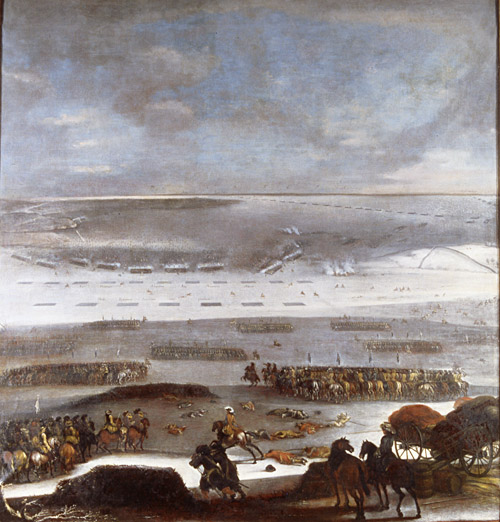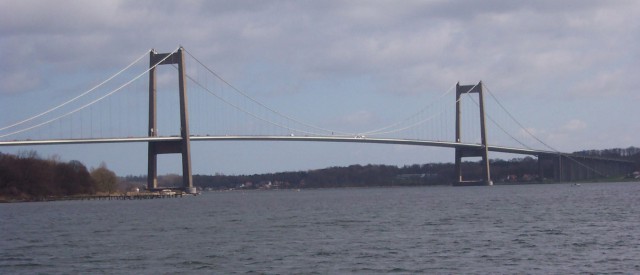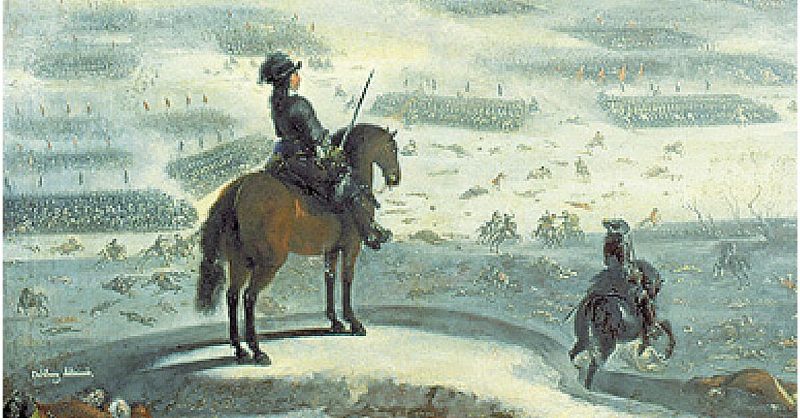It all started in 1655 during the Second Northern War. Sweden was fighting against the Polish-Lithuanian Commonwealth, Russia, Brandenburg-Prussia, the Habsburg Monarchy, Denmark-Norway, and sometimes, the Dutch Republic. On July 21 of that year, Charles X Gustav of Sweden invaded Poland-Lithuania and advanced across the country so fast, they called it the Swedish Deluge.
By September 8, he took Warsaw, and by October’s end, most of the region’s armed forces had surrendered to him. The Polish king, however, did not. Rather than surrender, John II Casimir Vasa fled to the Habsburgs. Given Europe’s constantly changing set of alliances, Charles’ knew that it was only a matter of time before the other nations began attacking him.
There was also the matter of securing his hold over Poland-Lithuania. Not only were the Swedes foreign invaders, but they were also predominantly Protestant while the Poles and Lithuanians were largely Catholics, creating tensions between the occupiers and the occupied. And then there was John. The Polish king wanted his country back, so other nations began supporting him against Sweden.

By January 1656, Charles found himself bogged down in a series of skirmishes that seemed to get him nowhere. Worse, the Poles and Lithuanians were taking back their country. Taking advantage of this, Russia got involved so it could get its share of the spoils. The countdown had begun, and it was only a matter of time before the other nations joined the fray.
So now Charles was trapped. He had taken Poland-Lithuania, but couldn’t hold it effectively. His brother-in-law, Frederick of Hesse, had been killed when guerilla forces attacked the Swedish garrison at Socian in October 1655. And local resistance just kept mounting.

Abandoning his new acquisition would have been the best thing to do, but the Swedish king couldn’t just leave. If he did, he’d lose face. The other nations would take it as a sign of weakness, putting Sweden in serious trouble.
Fortunately, there was Sweden’s old enemy: Denmark. Nervous about Swedish expansionism, King Frederick III of Denmark and Norway signed a manifesto justifying war against Sweden on 1 June 1657. It was never formally declared, however, since Frederick needed time to martial his forces and to work out more alliances in preparation for actual combat.

But for Charles, it was exactly the face-saving excuse he needed. And the Little Ice Age would work in his favor.
Charles marched his 6,000-strong army out of Poland and into the western and central parts of Denmark, sweeping aside the Danish forces as they made their way toward Jutland. Though not a large one, they were among the best trained and most well-equipped militia at the time. The Swedes reached the newly-built Danish fortress of Friedriksodde along the east coast of Jutland and took it on October 24.
Now equipped with the captured fortress’ supplies and all of Jutland under his control, Charles decided to do something mad – attack the Danish islands. That wasn’t the mad bit. An assault by sea on ships was the normal way to go about it, but it was December, the coldest anyone had ever known.
The seas around the islands had frozen solid. That meant no boats. But the king an idea, so he turned to his engineer.
Count Erik Jönsson Dahlbergh wasn’t born a noble. He was an orphan of peasant stock, but proved such a capable military man and engineer, as well as a brilliant designer of fortifications, that he was made into an aristocrat. Within his lifetime, they called him the “Vauban of Sweden,” in honor of Sébastien Le Prestre de Vauban, the most famous military engineer of his time.

Dahlbergh headed out on the ice and returned days later with his assessment. On the morning of 30 January 1658, some 9,000 cavalrymen and their horses, as well as 3,000-foot soldiers and the rest of the army’s equipment, stepped on the ice.
The ice in question was what the Little Belt had turned into. This normally watery strait stretches about 31 miles long and some 17 miles wide, containing many small islands in its path. The Swedes headed for Funen, the third biggest Danish island.

Despite Dahlbergh’s assessment, the ice warped beneath the weight of the men. In some places, they sank up to their knees, but the “Vauban of Sweden” lived up to his reputation – the ice didn’t break. They made it to Funen, brushing aside some 3,000 defenders and establishing themselves on the island.
Their next destination was Zealand Island. To reach it, they had to cross over the Great Belt, some 37 miles long and 10 to 20 miles wide. Dahlbergh again went out to assess the ice, but when he came back, the news wasn’t great. A direct route was no good; the ice wouldn’t hold them.
Instead, they had to take a longer route toward Langeland Island and then on to Lolland, Denmark’s fourth largest. So that’s exactly what they did. Charles went ahead with the cavalry on the evening of February 5 and reached Langeland later that night. The infantry and artillery had to wait till the next day, as Dahlberg felt it would give the ice time to repair itself.

By February 8, they were all on Zealand. Subjecting the entire army to a forced march, they reached Copenhagen on February 15, taking the Danes completely by surprise, since what sensible person travels in such weather?
Frederick (who was sensible) was waiting for the spring thaw to begin his war on Sweden. Since Charles decided to bring the war to him, and since Frederick didn’t like the idea of fighting on his front lawn, the latter capitulated.
In signing the Treaty of Roskilde on 26 February 1658, Frederick handed over Denmark’s entire eastern half to Sweden.
